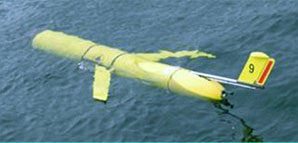Glider DAC Benefits of Participation
The Glider DAC provides a number of benefits to glider operators to improve their experience with their glider data. These include:
- Data distribution: By submitting your data in near real time to the DAC, it can be disseminated via the National Data Buoy Center (NDBC) to the Global Telecommunication System (GTS) as well as made available to other modelers. Distributing the data broadly allows it to be used by modelers and other product developers. It can be assimilated in models or used for model data validation. Sharing the data improves its use and value to the ocean observing community.
- Meet Requirements: NOAA and other agencies are beginning to institute policies requiring federally funded observational data be made publicly available and maintained in a data archive. By submitting data to the DAC, the DAC will meet reporting requirements for federal agencies. Additionally, IOOS Regional Associations are developing certification proposals for certification by NOAA and IOOS. The DAC can be used to meet certification requirements for glider data quality assurance, access, and archive.
- Quality Assurance (QA): The glider DAC is implementing some baseline QA procedures that operators can point to to meet requirements for QA/QC. These will meet initial requirements if or until glider operators complete more thorough post-processing and analysis.
- Visualization Tools: The Glider DAC provides tools for operators to visualize profiles of their data and perform visual analysis and comparisons.
- Data Metrics: In addition to visualization tools, by allowing the DAC to ingest your glider data, it can be incorporated into cumulative metrics for gliders. These help to show the value of gliders and demonstrate the value of the observing system. This enables funding resources to fight for continued and additional funding to maintain this valuable observing platform.
